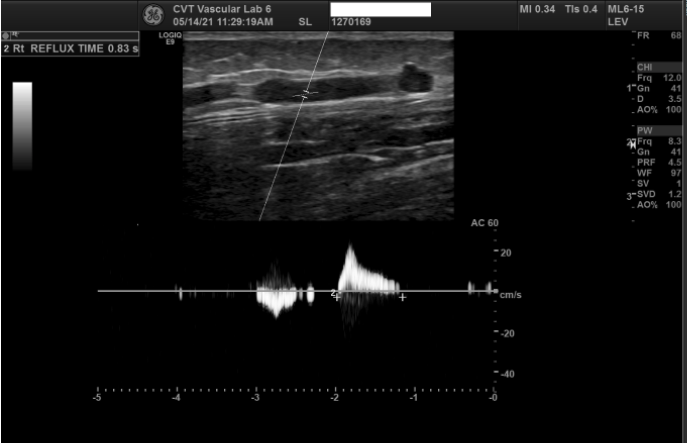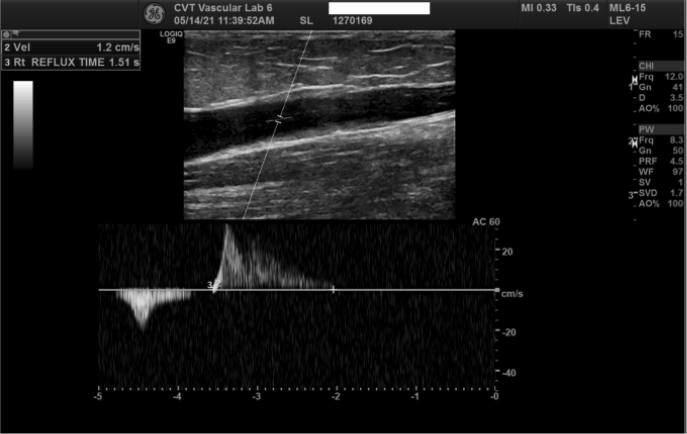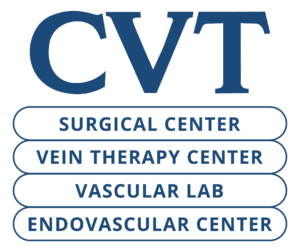In the lower extremities, blood returns to the heart through a network of deep and superficial veins.
Normal venous flow patterns depend on the function of valves within the veins. Venous insufficiency (reflux) may occur if veins are damaged (from DVT for example) or if the valves are unable to provide one-way flow. Venous insufficiency in the superficial veins can result in varicose veins.

Risk factors for varicose veins include:
- Family history
- Older age
- Gender
- Pregnancy
Symptoms of varicose veins include:
- Pain
- Swelling
- Bulging of superficial veins
- Itching around varicose veins
- Dark color
- changes on the lower part of the leg
*Spider veins are similar to varicose veins, but they are smaller and found closer to the surface of the skin and are often blue or red in color.
Untreated long-standing venous insufficiency in the deep or superficial venous system can cause pain, swelling, skin changes, and eventual tissue breakdown.
The function of valves in each segment of the evaluated veins can be assessed by determining the direction of blood-flow using ultrasound. The examination is often done in the upright or tilted position, as this is the best way to evaluate valve function. Sclerotherapy (injection of a solution) or venous ablation (Closure) are two treatment options for varicose veins, but they can vary by condition and treatment plan of your physician.
Length of exam: 60-90 minutes
Preparation: No special preparation is required.
Images of a Venous Insufficiency Examination



